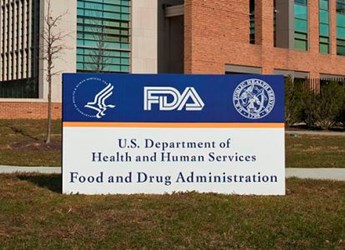FDA Forms Patient Advisory Committee For Medical Device Reviews
By Jof Enriquez,
Follow me on Twitter @jofenriq

The U.S. Food and Drug Administration’s (FDA) Center for Devices and Radiological Health (CDRH) has formed the first-ever Patient Engagement Advisory Committee (PEAC) with the purpose of focusing on patients' perspectives on medical device development and regulation.
According to an FDA announcement, the PEAC will provide advice to FDA on topics such as: agency guidance and policies, clinical trial or registry design, patient preference study design, benefit-risk determinations, device labeling, unmet clinical needs, available alternatives, patient reported outcomes and device-related quality of life or health status issues, and other patient-related topics.
The patient advisory committee will consist of a core of nine voting members, serving in overlapping terms of up to 4 years, who are experts in areas such as:
- clinical research
- primary care patient experience
- health care needs of patient groups
- methodologies for eliciting patient preferences
- strategies for communicating benefits, risks and clinical outcomes to patients and research subjects
The voting members may include one consumer representative recommended by consumer interest groups. The Commissioner may also nominate from a pool of individuals non-voting members who are industry representatives, whose actual number of representation will depend on the meeting topic.
According to RAPS, CDRH Acting Associate Center Director for Science and Strategic Partnerships Kathryn O’Callaghan said at a symposium that the advisory committee's "first meeting will be next year and the committee will be a resource focused on what’s happening in the patient community and their perspectives."
As reported on MDO, in the past few years, FDA has moved to include more patient perspectives on regulatory decision-making and device development. In 2012, it published a document about benefit-risk assessments that encouraged patient-centered metrics in determining positive outcomes and tolerance of possible side effects. In 2013, CDRH launched the Patient Preference Initiative, which established a patient engagement panel as part of its Medical Device Advisory Committee (MDAC) and reiterated the importance of patient preferences in device safety and efficacy evaluations. Last March, FDA issued a new draft guidance that outlines how patient preference information (PPI) might be collected and used in device approvals and labeling.
“We are entering an era of ‘patient-centered’ medicine in which patients and their care partners participate actively in decision-making and priority-setting about all aspects of health care,” states a blog post written by Nina L. Hunter, Ph.D., Special Assistant for Medical Policy to the Office of Medical Products and Tobacco, and Robert M. Califf, M.D., Deputy Commissioner for Medical Products and Tobacco, and formal nominee for FDA Commissioner.
Rather than letting health care providers make decisions for patients, "FDA believes that patients can and should bring their own experiences to bear in helping the Agency define meaningful benefits or unreasonable risks for certain new devices," the FDA officials wrote.
One stakeholder group was wary on the FDA's decision to create a dedicated patient advisory committee.
“Often so-called patient groups are sponsored heavily by the medical device industry,” said Dr. Michael Carome, health research director at the consumer group Public Citizen, to the Star Tribune. “Patients can make the agency aware of unmet medical needs. But when [FDA] decides whether or not to approve a device, the decision should be made based on scientific research and not patient preference.”
In the blog post, however, FDA assured that, “patient preference information will not be used to justify approval of unsafe or ineffective devices: If FDA determines the device would expose patients to an unreasonable or significant risk of illness or injury, or that the benefits do not outweigh the risks for a defined target population, FDA would not approve such a device.”
